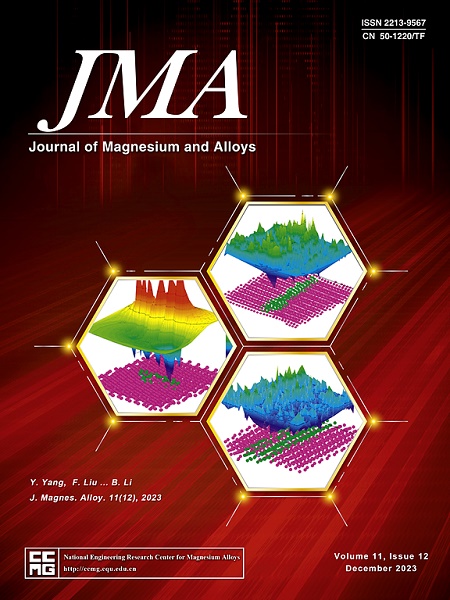The stable configuration for a single-atomic-layer-height disconnection on the {101¯1} twin boundary
IF 15.8
1区 材料科学
Q1 METALLURGY & METALLURGICAL ENGINEERING
引用次数: 0
Abstract
Single-atomic-layer-height disconnections that connect with I1 stacking faults are produced on twin boundaries in pure magnesium through transmutation of basal 〈a〉 mixed dislocations across the twin boundaries, and their stabilities are examined using molecular dynamics simulations. The stable configuration for a single-atomic-layer-height disconnection is a pyramidal-basal (PyB) disconnection connecting an I1 fault associated with a stacking sequence change of ABACA, or a basal-pyramidal (BPy) disconnection connecting an I1 fault associated with a stacking sequence change of BABCB. A stable single-atomic-layer-height disconnection can transform to a less stable single-atomic-layer-height disconnection when its step orientation changes solely. A stable single-atomic-layer-height disconnection can also transform to another stable single-atomic-layer-height disconnection, when the step orientation of the disconnection and the type of the I1 fault that connects with the disconnection change synchronously, and this process is accompanied with the emission of a Shockley partial dislocation from the twin boundary.

求助全文
约1分钟内获得全文
求助全文
来源期刊

Journal of Magnesium and Alloys
Engineering-Mechanics of Materials
CiteScore
20.20
自引率
14.80%
发文量
52
审稿时长
59 days
期刊介绍:
The Journal of Magnesium and Alloys serves as a global platform for both theoretical and experimental studies in magnesium science and engineering. It welcomes submissions investigating various scientific and engineering factors impacting the metallurgy, processing, microstructure, properties, and applications of magnesium and alloys. The journal covers all aspects of magnesium and alloy research, including raw materials, alloy casting, extrusion and deformation, corrosion and surface treatment, joining and machining, simulation and modeling, microstructure evolution and mechanical properties, new alloy development, magnesium-based composites, bio-materials and energy materials, applications, and recycling.
 求助内容:
求助内容: 应助结果提醒方式:
应助结果提醒方式:


